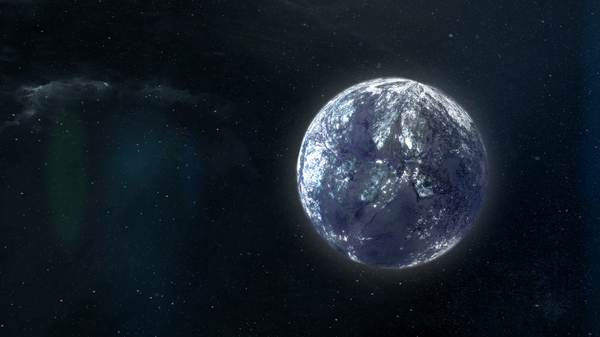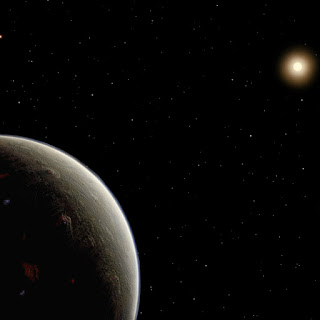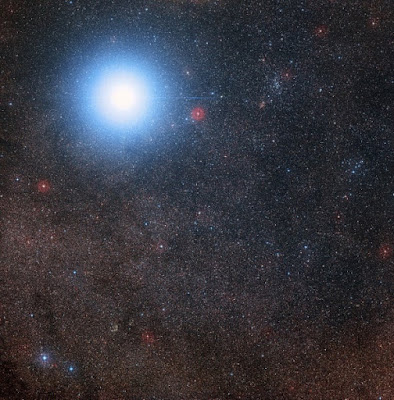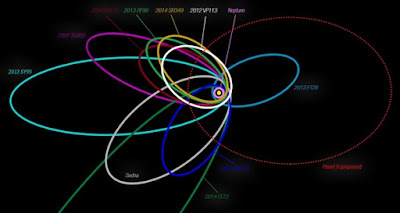
An unidentified flying object as seen in a declassified Department of Defense video, DoD
Topics: Aerodynamics, Applied Physics, Biology, Exoplanets, General Relativity, SETI
May 17, 2019- No, little green men aren't likely after the conquest of humanity. Boyd's piece for Phys.org highlights the reason why the Pentagon wants to identify UFOs: they're unidentified. If a warfighter on the ground or in the sky can't ID an object, that creates an issue since they don't know if it's friendly, adversarial, or neutral.
U.S. Navy pilots and sailors won't be considered crazy for reporting unidentified flying objects, under new rules meant to encourage them to keep track of what they see writes Iain Boyd for Phys.org.
Why is the Pentagon interested in UFOs? Intelligent Aerospace
The Pentagon refers to them as "transmedium vehicles," meaning vehicles moving through air, water, and space. Carolina Coastline breathlessly uses the term "defying the laws of physics." So I looked at what the paper might have meant. The objects apparently exceed the speed of sound without a sonic boom (signature of breaking the barrier). Even though this is reported by Popular Mechanics, they're quoting John Ratcliffe, whose name somehow sounds like a pejorative. Consider the source.

U.S. Navy F/A-18 flying faster than the speed of sound. The white cloud is formed by decreased air pressure and temperature around the tail of the aircraft.
ENSIGN JOHN GAY, U.S. NAVY
The speed of sound is 343 meters per second (761.21 miles per hour, 1,100 feet per second). Mach 1 is the speed of sound, Mach 2 is 1522.41 mph, Mach 3 is 2283.62 mph. NASA's X-43A scramjet sets the record at Mach 9.6 (7,000 mph), so, it's easy to see where Star Trek: The Next Generation got its Warp Speed analog from. The top speed of the F/A-18 is 1,190 mph. Pilots and astronauts under acceleration experience G Forces, and have suits to keep them from blacking out in a high-speed turn.
A Science Magazine article in 1967 reported the dimensions and speeds for the object were undeterminable. History.com reported an object exceeding 70 knots, or 80.5546 mph underwater (twice the speed of a nuclear submarine, so I can see the US Navy's concern). I found some of the descriptions on the site interesting:
5 UFO traits:
1. Anti-gravity lift (no visible means of propulsion), 2. Sudden and instantaneous acceleration (fast), 3. Hypersonic velocities without signatures (no sonic boom), 4. Low observability, or cloaking (not putting this on Romulans, or Klingons), 5. Trans-medium travel (air, water, space).
When I look at these factors, I don't get "little green men." First caveat: there are a lot of planets between us, and them with resources aplenty. Second caveat: any interest an alien intelligence might have in us is as caretakers of an experiment, or cattle. That's disturbing: ever see a rancher have conversations with a chicken, sow, or steer before slaughter?
My hypothesis (Occam's razor) - these are projections, but of a special kind:
For the first time, a team including scientists from the National Institute of Standards and Technology (NIST - 2016) have used neutron beams to create holograms of large solid objects, revealing details about their interiors in ways that ordinary laser light-based visual holograms cannot.
Holograms -- flat images that change depending on the viewer's perspective, giving the sense that they are three-dimensional objects -- owe their striking capability to what's called an interference pattern. All matter, such as neutrons and photons of light, has the ability to act like rippling waves with peaks and valleys. Like a water wave hitting a gap between the two rocks, a wave can split up and then re-combine to create information-rich interference patterns.
Move over, lasers: Scientists can now create holograms from neutrons, too, Science Daily
This of course doesn't explain the decades of observations, since holograms came into being in a 1948 paper by the Hungarian inventor Denis Gabor: “The purpose of this work is a new method for forming optical images in two stages. In the first stage, the object is lit using a coherent monochrome wave, and the diffraction pattern resulting from the interference of the secondary coherent wave coming from the object with the coherent background is recorded on the photographic plate. If the properly processed photographic plate is placed after its original position and only the coherent background is lit, an image of the object will appear behind it, in the original position.” Gabor won the Nobel Prize in 1971 for "his invention and development of the holographic method." Also: History of Holography
This is purely speculative. I have no intelligence other than what I've shared. It does in my mind, explain the physics-defying five traits described above. It does not explain the previous supposition of sightings since humans started recording history, or trying to hypothesize their sightings in antiquity. Solid objects flying at hypersonic speeds make sonic booms; projections - ball lightning, 3D laser, or solid neutron holograms - likely won't.
If these are projections (adversary, friendly, neutral), who is doing them, and why?











